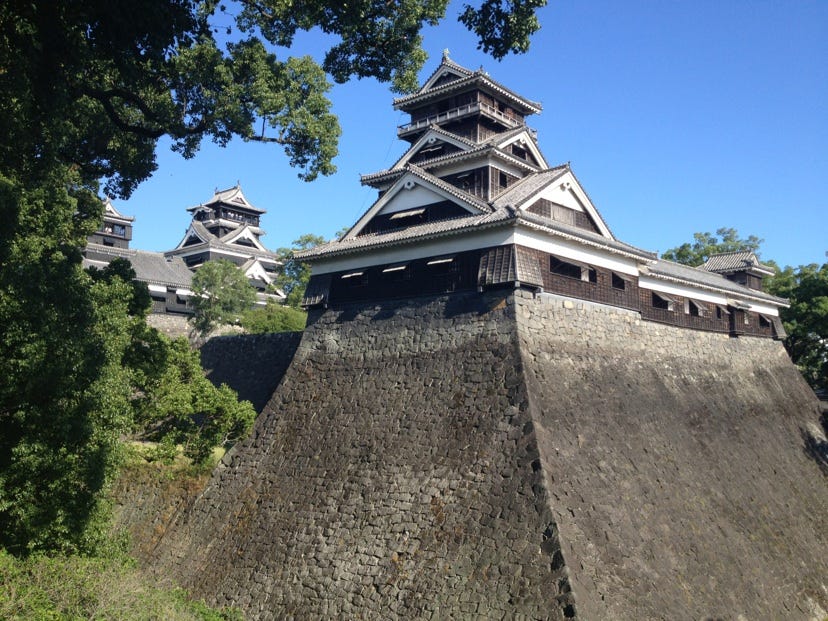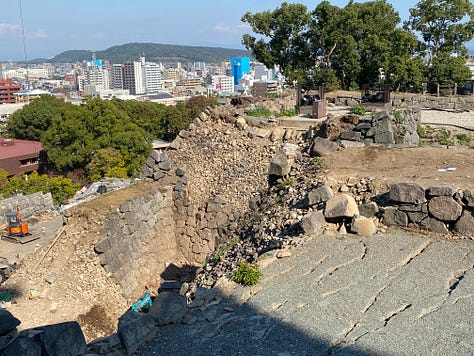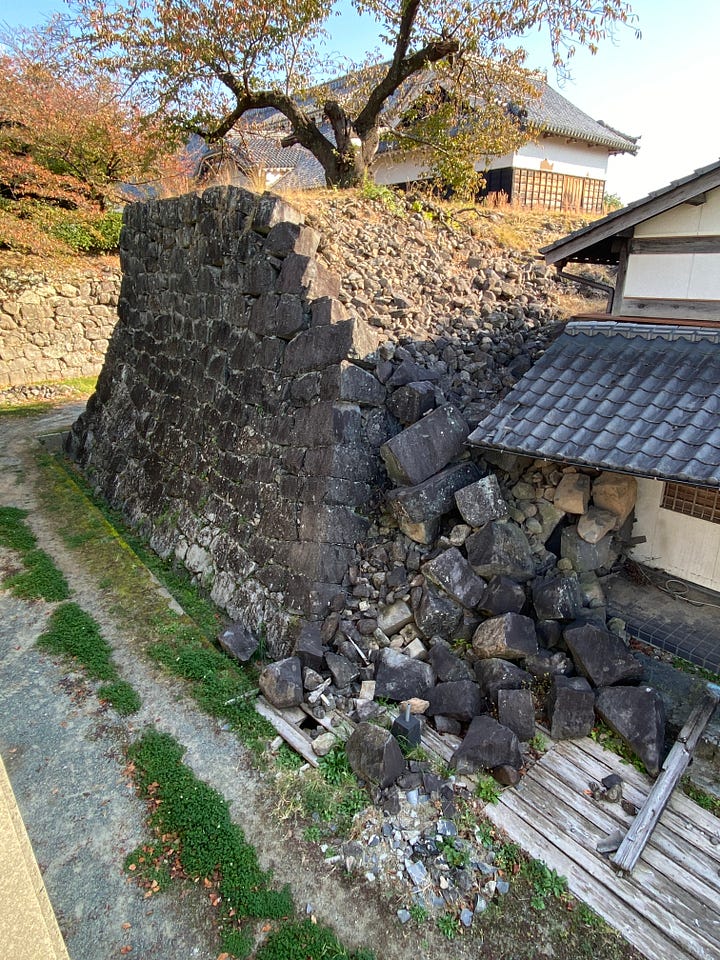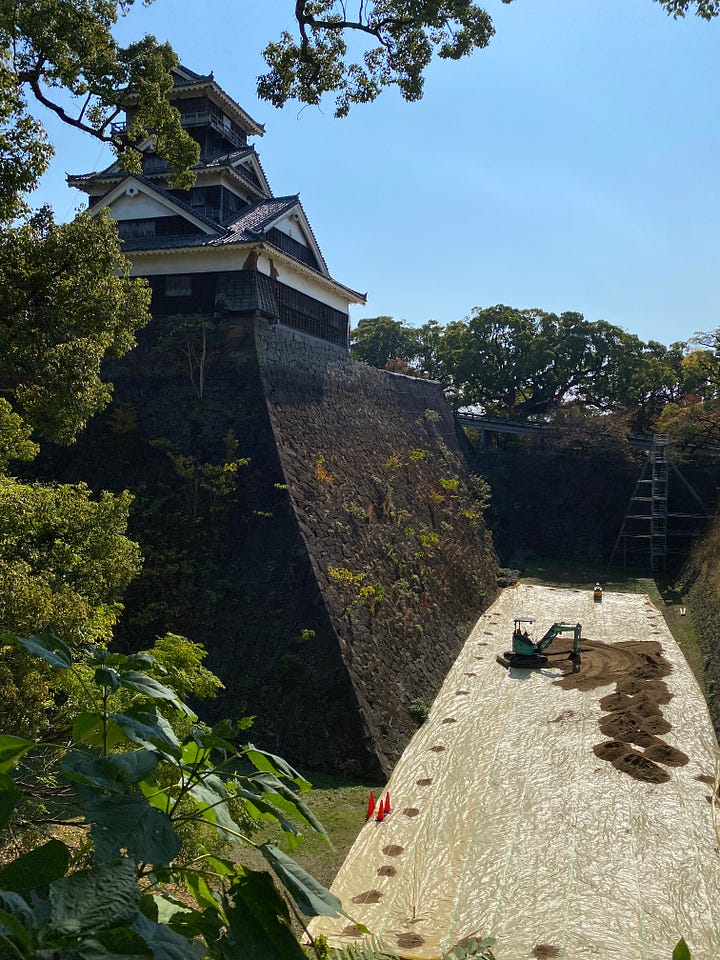Kumamoto Castle Earthquake Restoration News
Newspapers report large scale dismantling of the stone walls may be necessary!
In news announced yesterday in the Kumamoto Nichi Newspaper, Kumamoto Castle’s towering stone walls below the Udo Yagura turret may have to be dismantled in order to preserve them following damage from two large earthquakes in 2016 that killed 50 people and injured 3,129 others, and caused severe damage to the city’s iconic Kumamoto Castle.
Restoration methods for the stone walls of the Udo turret of Kumamoto Castle reconsidered with a view to large-scale demolition, in order to protect the discovered remains.
On the 1st, Kumamoto City announced its policy to review the restoration methods of the stone walls below the Udo Yagura (a national important cultural property) of Kumamoto Castle, which was damaged in the Kumamoto Earthquake, and to reconsider the process, including large-scale dismantling of the stone walls. This was reported at a meeting of the Kumamoto Castle Cultural Heritage Restoration Review Committee (Chairman: Toshitaka Yamao, Professor Emeritus of Kumamoto University, and 6 members) on the same day, and approved by the committee members.


The Udo turret is believed to have been built during the Keicho era (1596-1615), and the multi-storey turret with three levels, five storeys and one basement level retains its appearance from the time when the castle was built. The foundations and pillars were damaged in the earthquake, and the stonewalls have bulged outwards (This is due to a settling of the smaller stones within the out stone wall casing). In particular, a large bulge has been identified in the stone wall below the attached continuation turret site.



In order to minimise the impact on the remains, the committee had previously considered a method of reinforcing the stone wall by building a new 'barrier-like stone wall' on the west side of the stone wall under the second turret, which had a large bulge, using a reinforced concrete construction method to suppress the bulge. However, during excavations of the dry moat on the west side carried out last year, a stone wall was unearthed that had been buried under four metres of sedimentary soil from the Edo period. Subsequent investigations also revealed that the majority of the stone wall under the Udo turret may have been restored during the Edo period.


At the committee meeting on the same day, the city reported that if a new stone wall was built, it would sink about 18 cm under its weight, which could further damage these remains. Furthermore, the committee decided to reconsider the construction method, including large-scale dismantling, because the retaining stone wall would be about 2 metres higher than the Hohoate Gate Bridge, which would damage the landscape.
A committee member commented that 'If the essential value cannot be preserved by damaging the remains, there is room for reconsideration.” The committee members agreed that it is necessary to preserve not only the remains but also the landscape.
Regarding the restoration of the stonewalls other than those under the tamon yagura turret, a committee member commented: 'The same consideration for the landscape is necessary when building a retaining wall. They also asked for deeper discussions and consideration on the extent of large-scale demolition.
The restoration of the Udo turret is scheduled to be completed in FY2032. The city has stated that the reconsideration of the construction method will have no impact on the construction period.
(Report filed by Minori Onizuka) Original link: https://kumanichi.com/articles/934321




